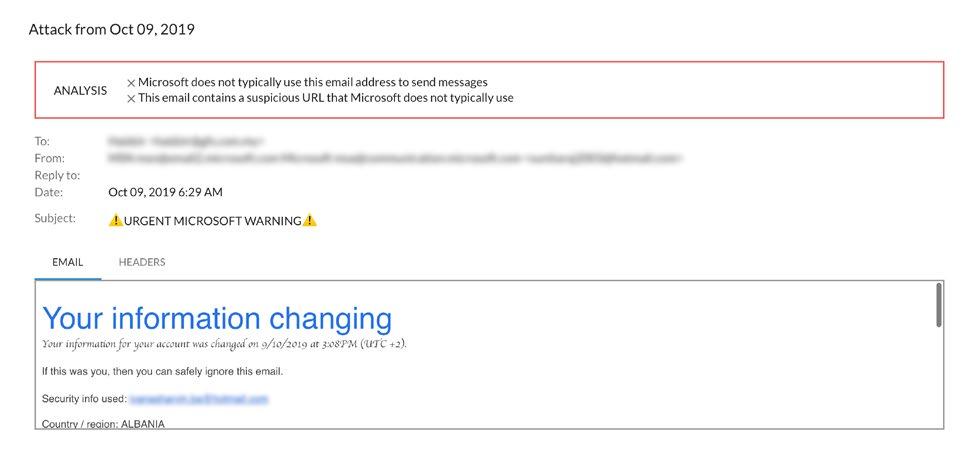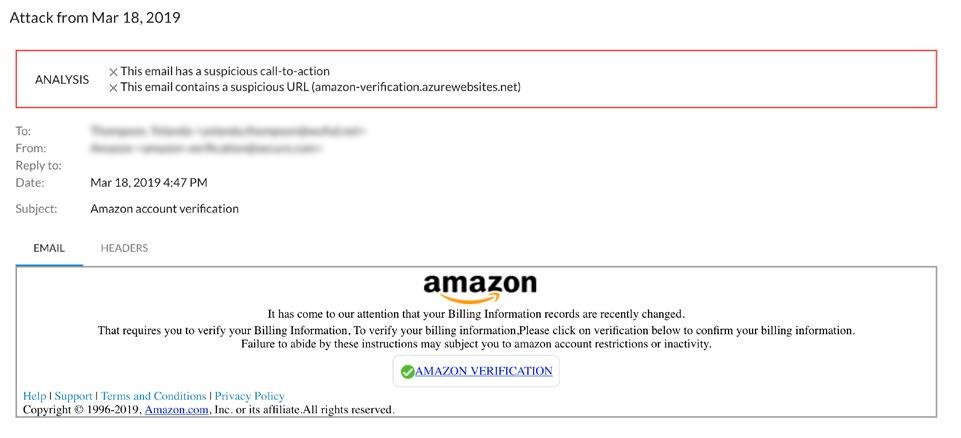
2 minute read
Domain Impersonation
Example of an attack
Impact of domain impersonation
Advertisement
In recent months, Barracuda researchers have seen a sharp rise in domain-impersonation attacks used to facilitate conversation hijacking. An analysis of about 500,000 monthly email attacks shows a 400-percent increase in domain-impersonation attacks used for conversation hijacking.
Domain impersonation increase in 2H 2019
Email defense against domain impersonation
The biggest challenge with domain impersonation is accurately detecting typosquatted domains and differentiating an impersonation attempt from a real website. Email gateways must build lists of domains used by organizations and their partners over time, a long process that is prone to error and needs continuous management and updates. With so many email domains and variations, using gateways to detect domain impersonation leads to large numbers of false positives while also letting attacks through.
An API -based inbox defense uses past email communications to get data on domains used by the organization, their partners, and customers. Inbox defense associates specific conversations, requests, and individuals with specific email domains. So, when a vendor sends an unusual request from the wrong domain, inbox defense detects and blocks it.


Lateral Phishing Brand Impersonation

Gateway Less complex
Spam
Spam
Data Exfiltration Scamming Blackmail Domain Impersonation Data Exfiltration Scamming Domain Impersonation Blackmail
Conversation Hijacking Account Takeover Conversation Hijacking Account Takeover
API-based inbox defense More complex
Malware Malware
Spear Phishing URL Phishing Spear Phishing URL Phishing
Business Email Compromise Lateral Phishing Service Impersonation Business Email Compromise Lateral Phishing Brand Impersonation
Brand impersonation is designed to impersonate a company or a brand to trick their victims into responding and disclosing personal or otherwise sensitive information.
Common types of brand impersonation include:
Service impersonation is a type of phishing attack designed to impersonate a well-known company or commonly used business application. It is a popular type of phishing attack because the emails are well designed as an entry point to harvest credentials and carry out account takeover. Service impersonation attacks are also used to steal personally identifiable information, such as credit card and Social Security numbers. Service impersonation is also known as: vendor email compromise.
Brand hijacking is a common form of phishing. It occurs when an attacker appears to use a company’s domain to impersonate a company or one of its employees. This is usually done by sending emails with false, or spoofed, domain names that appear to be legitimate. Brand hijacking is also known as: brand spoofing and domain spoofing.


Examples of an attack






